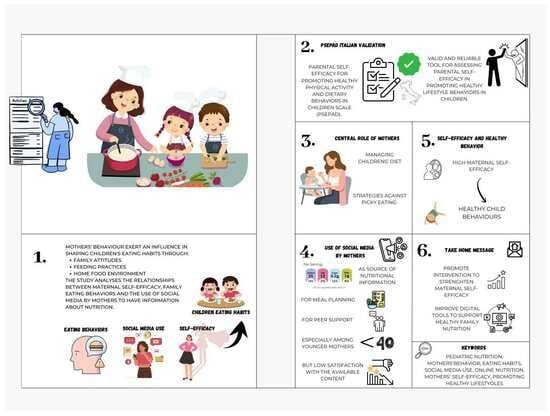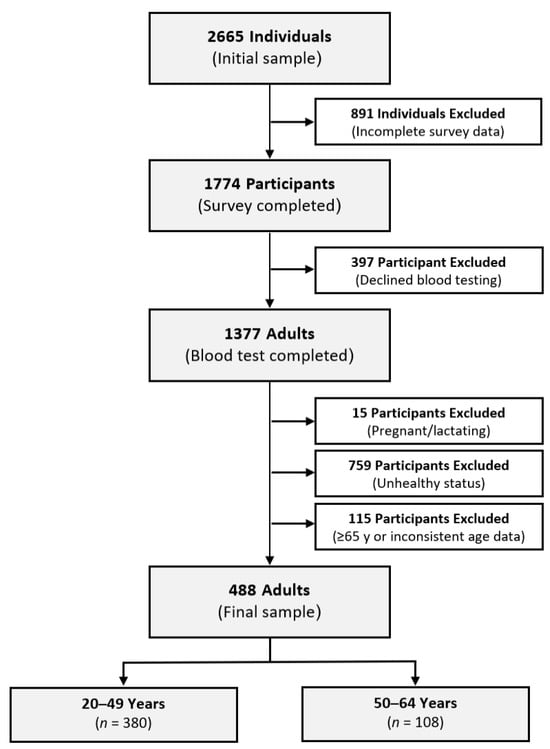- Article
Maternal Self-Efficacy and the Relation with Children’s Dietary Behaviors in the Digital Era
- Elisa Zambetti,
- Maura Crepaldi and
- Francesca Orgiu
- + 6 authors
Mothers’ behavior strongly influences children’s eating habits, with family attitudes and feeding practices playing a key role in dietary development. In accordance with the previous literature, this study examined these aspects, including also mothers’ use of social media to stay informed about nutrition as an innovative element. The main goal was to validate the Italian version of the PSEPAD scale (Parental Self-Efficacy for Promoting Healthy Physical Activity and Dietary Behaviors in Children), which is a valid and reliable tool for assessing parental self-efficacy in encouraging healthy lifestyles in children, through exploratory factor analysis (EFA) and confirmatory factor analysis (CFA). The sample was composed of 217 mothers. Results were interpreted through groups comparisons (chi-square, ANOVA, and t-test). The findings confirmed the central role of mothers in managing children’s diets and using strategies against picky eating behaviors. The study also highlighted the growing use of social media among mothers, especially younger ones, as a source of nutritional information, meal planning, and peer support, despite a generally low level of satisfaction with the content available on pediatric nutrition. Finally, the results showed a positive link between maternal self-efficacy and healthier child behaviors: mothers with higher self-esteem and confidence were more effective in promoting healthy habits. These findings underscore the importance of targeted interventions to strengthen maternal self-efficacy and the development of digital tools to support healthy family lifestyles.
22 December 2025




![Olive Tree (Olea europaea) Derived Raw Materials (Wood, Twigs, Bark, Leaves, Fruits, and Seeds) and Their Major Chemical Constituents [15,16,17,18,19,20].](https://mdpi-res.com/dietetics/dietetics-04-00058/article_deploy/html/images/dietetics-04-00058-g001-550.jpg)
